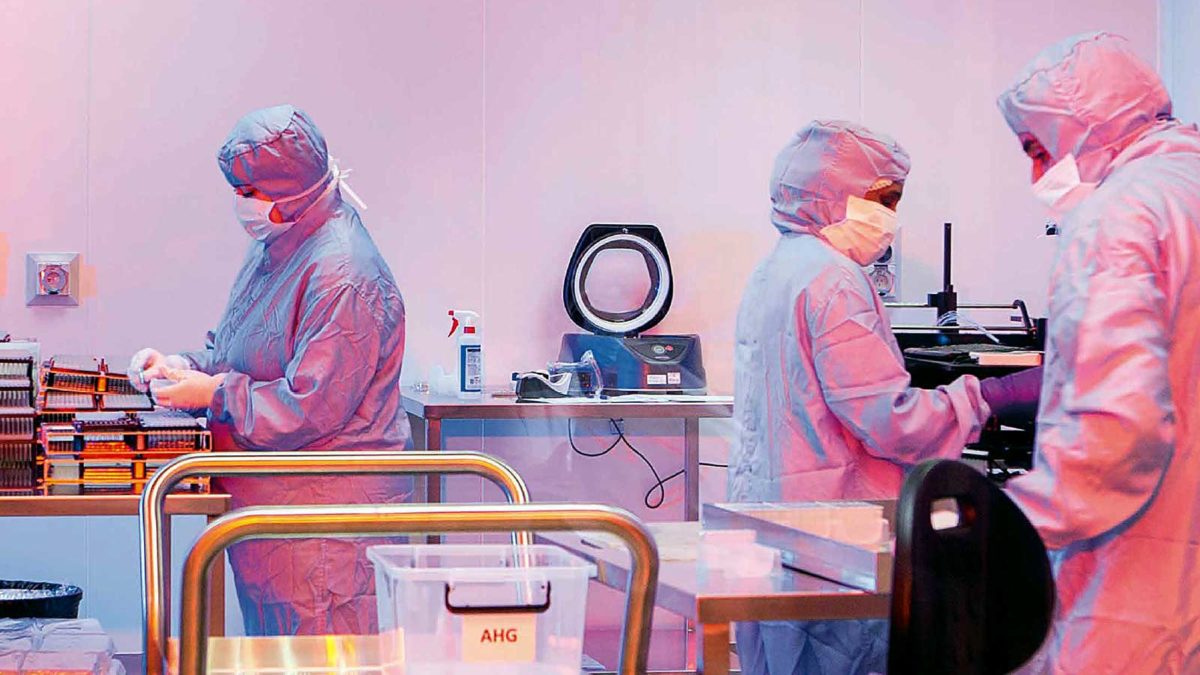One little prick that could go a long way
Blood diagnostic company Haemokinesis Limited is ASX-bound, with its $17 million share issue, at 20 cents a share, closing this Wednesday, with Haemokinesis expected to commence trading on the exchange on Friday, 8 April. When it hits the screens Haemokinesis will have a market capitalisation of $77 million.
Haemokinesis – which means “moving blood with the mind” – was established in 2011 to create new diagnostic platforms initially in immunohaematology (identifying human blood groups and associated tests) but also with applications in emergency medicine. The company has created a unique, patented point-of-care (POC) diagnostic platform that is considered a significant advance on current laboratory testing methods, and an in-lab platform capable of disrupting the current US$2.1 billion ($2.8 billion) world immunohaematology diagnostics market, which is estimated to grow to US$3.43 billion ($4.6 billion) by 2028.
Haemokinesis’ business mission is to provide the ability to dispense blood, identify human blood groups and provide emergency and rapid point-of-care testing wherever required, and as quickly as possible – in what the company describes as “clinically relevant timeframes.”
The business is based around two main inventions.
The first is a gel-based platform of blood analysers for hospital emergency departments, medium-throughput analysers for small hospitals, and high-throughput analysers for the hospital laboratory and blood bank markets. This platform is in the marketplace, and Haemokinesis is already generating revenue from the sale of:
- the Status1 analyser, for rapid blood-group testing;
- the StarGel10 analyser and centrifuge for rapid blood-group and antigen testing;
- the System-S medium-throughput analyser for hospitals;
- the Eclipse high-throughput analyser for large hospitals and laboratories; and
- the Gemini high-throughput analyser for blood donor centres.
The second is the Group Legible Immunohaematology Format (GLIF), a unique rapid point-of-care bio-active paper diagnostic platform, developed with Monash University. The company is aiming the GLIF blood group test product for sale as a pre-donation screening test for the blood donation market. GLIF is not currently registered with any regulatory authorities, but has been supplied to blood donation centres in the US, for internal screening purposes only. Haemokinesis intends to seek European CE Mark and Australian TGA approval ahead of accelerating sales of the GLIF product in those markets. Further tests based around the GLIF platform are anticipated to follow shortly.
The company also makes and sells compatible consumables for these products, such as reagents, diluents and antisera. Haemokinesis analysers are typically sold with a contract to supply consumables and support services; the company’s revenue model incorporates a mix of upfront hardware revenue generated by sales of its analysers, as well as ongoing revenue from the sale of the consumables relevant to each analyser.
The prospectus states that Haemokinesis has direct sales as well as 24 third-party distributors covering 56 countries.
GLIF is the big-potential product – what Haemokinesis founder and chief executive Jim Manolios calls the “galvanising piece of technology.” It is a bioactive paper that reacts to a blood sample and tells the user the analysis of the patient’s blood group, and certain antigens. The GLIF card will be used in rapid POC diagnostics.
Haemokinesis is selling GLIF at present on an “order-by-order” basis in the US as a pre-screening process for new donors at blood collection centres operated by Vitalant, which is a non-profit organisation that collects approximately 1.8 million donations of blood across 120 donation centres each year. However, the company stresses in the prospectus that despite being able to sell the product to certain US blood centres for screening, GLIF is not yet approved by the US Food & Drug Administration (FDA), and there is no guarantee, despite internal use by certain US blood centres for screening, that GLIF will achieve regulatory approvals for wider use or application.
“Internally, we called the GLIF development process ‘Project Sahara,'” says Manolios. “We designed it so that a person could as test their own, or another person’s blood, to determine the blood type from the eight possible blood types, anywhere, at any time, without the need for water, electricity, the internet, lab equipment or training. So, it could be used in the middle of the Sahara, as long as the person could prick their finger.
“It’s a self-interpretive, disposable card that just requires a drop of blood, and we’re selling it at $2-$5 a pop. Vitalant is taking as much as we can make. The revenue stream is only about $40,000-$50,000 a month, but the most important thing about GLIF is that it is creating its own market. We need to automate and scale-up production, and that is one of the reasons for the IPO raising.”
At the moment, Manolios says, a patient requiring blood will be given O-negative blood, as the universal blood type used for transfusions when the blood type is unknown. (This is why O-negative is used most often for emergency transfusions and for immune-deficient infants.) This will tide the patient over until the pathology lab identifies the patient’s blood type, in about an hour. But GLIF can provide the patient’s blood type in one minute, and do a full cross-match in ten minutes.
The big problem is that type O-negative blood is always in short supply, and in high demand by hospitals – both because it is the most common blood type, and its use as the universal blood type. “What GLIF can do is ensure that the patient gets type-specific blood far quicker,” says Manolios. “One, that’s better for their long-term recovery than O-negative if they have a different type, and two, it increases the amount of O-negative that’s available for use as first-response blood.
“GLIF is faster, more clinically relevant, and determines the blood that’s safest to transfuse. The technology is built into the consumable, which is the way to go. We think it is technology that is way ahead of the incumbent standard, and the market could easily be a US$10 billion market.”
Haemokinesis expects potential uses to include:
- Emergency mass-trauma scenarios;
- Hospitals for bedside testing prior to transfusion;
- Medical general practice clinics, to reduce the need for expensive pathology tests with long lead-times;
- In-hospital laboratories for confirming blood bag groups or antigens;
- Military applications; and
- People who simply may be interested in their blood-type.
Manolios says Haemokinesis is “committed to removing the barriers of access to the basic elements of healthcare” around the world. “Safe and timely blood group testing is a fundamental requirement of a healthcare system,” he says. “Our vision is to ensure that anyone, anywhere has access to blood-typing technology.”
The lead manager of the Haemokinesis IPO (which is not underwritten) is PAC Partners.









